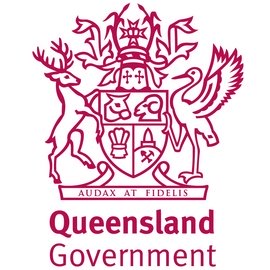Having taught secondary school History and English, we have spent countless hours trying to find materials that hit the mark. But we’ve often been left cobbling together bits and pieces into an unwieldy Frankenstein of internet and textbook resources.
This creates a high planning workload for teachers and a lesson lottery for students as instruction varies classroom to classroom.
We are not alone. A 2022 Grattan Institute survey of more than 2,000 teachers and school leaders found that 85 per cent of teachers do not have access to a comprehensive bank of high-quality curriculum materials for all their classes.
The flow-on impacts on workload are real. The typical teacher spends about six hours a week just creating or sourcing lesson materials, and a quarter of teachers report spending 10 hours or more.
Two thirds of teachers scour the internet and social media websites such as YouTube and Facebook at least once a fortnight, looking for resources that, unsurprisingly, can vary wildly in quality.
The trouble is, creating high-quality curriculum materials is not easy. They need to carefully sequence lessons to ensure students develop a strong foundation of knowledge and skills class-by-class and year-on-year.
These materials should also reflect the growing evidence-base for effective teaching practices, such as explicit instruction, mastery learning, and formative assessment.
Even if teachers have the deep content knowledge and expertise required to develop high-quality materials, they reality is, they simply don’t have the time.
Grattan’s research found it takes about 500 hours to develop a year’s worth of curriculum materials for one year level and subject, such as Year 7 English.
Expecting teachers to do this works asks them to do two jobs in one: a teacher by day and a curriculum writer by night.
Even where teachers have materials to choose from, selection is tricky. Teachers can’t possibly road-test every different material on the market before bringing it into the classroom.
The upshot is that teachers and school leaders are vulnerable to the latest publisher spin and sales tactics.
This leaves teachers in a Catch 22 – they want to give their students the best learning experience, but they just don’t have the time to develop or select the best materials.
Governments are waking up to the curriculum planning problem. For example, in 2023 the Victorian Government committed $40 million to developing lesson plans aligned to the new Victorian Curriculum and have subsidised access for Victoria’s more than 300 government secondary schools to choose either Stile or Education Perfect for their science curriculum.
It is encouraging to see governments invest in the materials teachers need. But is the money being well spent?
The answer is it might be, but we can’t know for sure. Unlike some other education systems, we don’t have a robust process for judging quality.
The quality of materials matters a lot. When teachers use high-quality curriculum materials, they can boost student achievement by one to two months per year, possibly even more.
This impact is particularly acute for disadvantaged students, with one study showing that students from low-income families could perform the same on tests as children from higher-income families when taught with high-quality curriculum materials.
There is a way out of this problem, if Australian governments set up a robust and independent quality-assurance process for curriculum materials.
Australia does not need to reinvent the wheel – the US already has a highly successful national model.
EdReports is a not-for-profit, established in 2015, that reviews the quality of comprehensive curriculum materials – such as textbooks and web-based curriculum materials – and publishes the results.
Reviews are conducted by accomplished teachers – with 17 years of experience on average – who receive more than 25 hours of training before they join a review team.
EdReports review teams spend four to six months reviewing each set of materials. This process takes hundreds of hours, as teams evaluate materials against detailed and evidence-based criteria.
The criteria for reviewing Foundation to Year 8 Mathematics curriculum materials, for example, are set out in a 100-page guide.
This requires reviewers to closely examine materials page-by-page. For example, when assessing the Year 1 curriculum, reviewers have to assess whether materials provide students with enough opportunities to practise and fluently add and subtract numbers below 20.
The EdReports model has changed the game in the US.
Many state governments use EdReports reviews to inform which curriculum materials they purchase for their teachers. Now curriculum publishers compete on the quality of their materials, not the size of their marketing budget.
And governments can be confident they are spending public money well, given EdReports’ robust and independent assessment of quality.
States can tailor the EdReports process to their specific needs. Massachusetts, for example, has a two-step process to whittle down the options recommended by EdReports.
For instance, in Foundation to Year 8 Maths, 32 sets of curriculum materials meet EdReports benchmarks.
The Massachussets Education Department shortlist has just seven options that they subsidise for schools to use. Their short-listing process prioritises alignment with their own state standards and materials that have more supports for English language learners.
But work doesn’t stop there. With a shortlist of high-quality options, states can also then invest in professional development for teachers.
Since 2023, Massachusetts has committed $20 million for professional development for teachers, including coaching and on-site training.
With a quality-assurance process in place, governments can have confidence that they're investing in high-quality materials, teachers’ workloads would be reduced, and students would be guaranteed a high base for their learning.
That sounds like a win-win-win to us.















